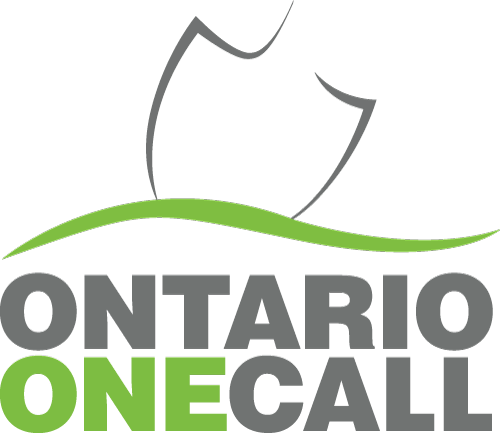What is a Dedicated Locator (DL)?
A single locate resource used to mark all underground infrastructure within project area. It is a good solution for large-scale and long-term projects that have complicated requirements.
Who is eligible to use DL?
Designated Broadband projects, a dig project that satisfies such criteria as may be prescribed by the Minister, a dig project for which the Project Owner chooses to use a dedicated locator.
What is a Project Owner?
The party who intends to carry out the excavation or dig project.
When do you submit your DL Project Request Notice to Ontario One Call?
90 Days prior to project start date
What does a member need to do within the initial 10 business days of receiving a DL 90 day notice?
Must agree in writing with Project Owner on a preferred DLSP.
Can Members view DL Requests in the web portal if a suppression has been applied?
Yes
Is there a standard template for the DL agreement between PO and DLSP?
We have a base framework; you can add anything else you’d like to include to the agreement. Contact us and we can share the base framework.
Who is responsible for the fees associated with DL?
The Project Owner is responsible for DL fees. Please refer to our policy here
What is a “designated broadband project”?
Under provincial law, broadband projects where funding (in full or in part) has been provided through the Ministry of Infrastructure for the purposes of deploying broadband and high-speed internet infrastructure in Ontario is considered a designated broadband project.
When did DL requirements for designated broadband projects come into effect?
Statutory changes to the Ontario Underground Infrastructure Notification System Act mandating the use of the dedicated locator model came into force on April 14th, 2022.
How should we provide access to DLSPs for mapping and other information/records they may require without breaching security? What format should mapping be provided in?
You can provide them with a log into your system. This can be temporary access, or access to only what they need to see. This can be discussed in the DL agreement between the PO, Member and DLSP, depending on the project scale.
Ideally the best mapping you can provide, such as GIS format, PDF, or anything where the locator can clearly see where they should be locating within your project scope.
What is the intent of the O. Reg 376/24?
This regulation is intended to support the government’s commitment to bring high-speed internet access to unserved and underserved homes and businesses by the end of 2025.
What does the regulation entail?
This regulation allows Designated Broadband Project to determine how to obtain their required locates if their project meets the following criteria:
- The affected Underground Infrastructure Owners (UIO) and the Project Owner (PO) have not agreed on a Dedicated Locator Service Provider (DLSP); and
- All or part of the project takes place in a municipality with a population of less than 100,000; or
- The project takes place in Northern Ontario
How is Northern Ontario defined?
Defined by the OUINS Act (i.e., territorial districts of Algoma, Cochrane, Kenora, Manitoulin, Nipissing, Parry Sound, Rainy River, Sudbury, Thunder Bay and Timiskaming and the City of Greater Sudbury)
Does this regulation apply to Designated Broadband projects that are already underway?
No. If designated broadband projects have already agreed upon a DLSP, locates must continue to be provided through the Dedicated Locator process.
Can I still use DL for my Designated Broadband projects, even though it’s located in the North, and touches a municipality with a population under 100,000?
Yes. Project owners (POs) now have the ability to decide how to fulfill their locate requirements if they meet the requirements set out in the regulation.
When using the DL model, requirements stipulated in the Act related to this process must be complied with (see section 7 of the Act).
Can I get a refund if my project falls within the criteria of the regulation?
Projects that have already agreed on a DLSP must continue to use the DL model.
What do I do if I am unsure if the regulation applies to my project?
Contact the DL Team at DL@OntarioOneCall.ca
How can I withdraw my project from using DL?
We have several resources that will guide you on all things related to DL, including how to submit notice to OOC.
When is the regulation effective?
It came into effect on October 9, 2024.
Do POs have to notify OOC of their preferred approach?
POs must notify OOC of their intention to use the standard locate process to fulfill their locate requests if they meet the requirements of the new regulation. OOC’s DL team will confirm whether the regulation applies and communicate their determination to the project owner.
If a PO withdraws from DL in accordance with the regulation, does that mean the locates fall into the public stream?
Yes. Where the regulation is applied, locates will fall within the standard or specified request requirements of the Act.
